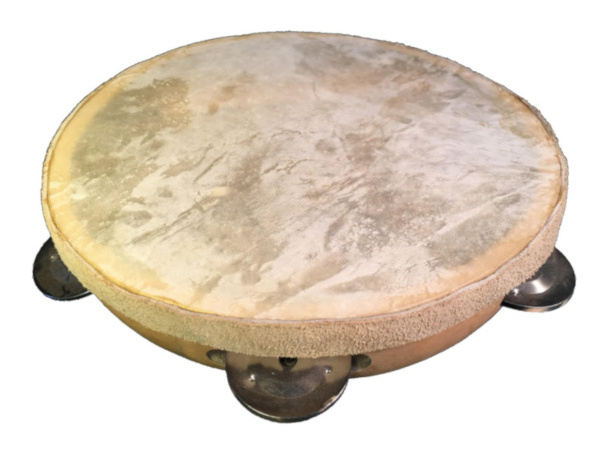The tambourine is a frame membranophone when the head is struck and an idiophone when shaken. Instructions on making tambourines can be found many places, but, having never seen one that used gourd wood for the frame, we thought we’d give it a try. Jingles can be fashioned from plain copper or bronze sheets, but we used commercially available jingles to simplify the construction and focus our efforts on just getting it to to work.
Using a gourd for a tambourine frame presents a problem—it’s not as strong as the wood generally used to make a tambourine frame. Be careful in selecting the gourd section to use. The head should be installed with less tension than would normally be used when using a more rigid frame. If the head it too taut, there is a higher risk that the frame will break.
However, a gourd frame does offer some advantages. For one thing, say goodbye to frame molds, which are traditionally used to wrap a piece of flexible wood into a tight circle to form a frame. Another cool thing is that there is no gluing or clamping, as is required with traditional tambourine construction. Finally, the softness of gourd wood actually makes its easier to cut the slots for the jingles.
